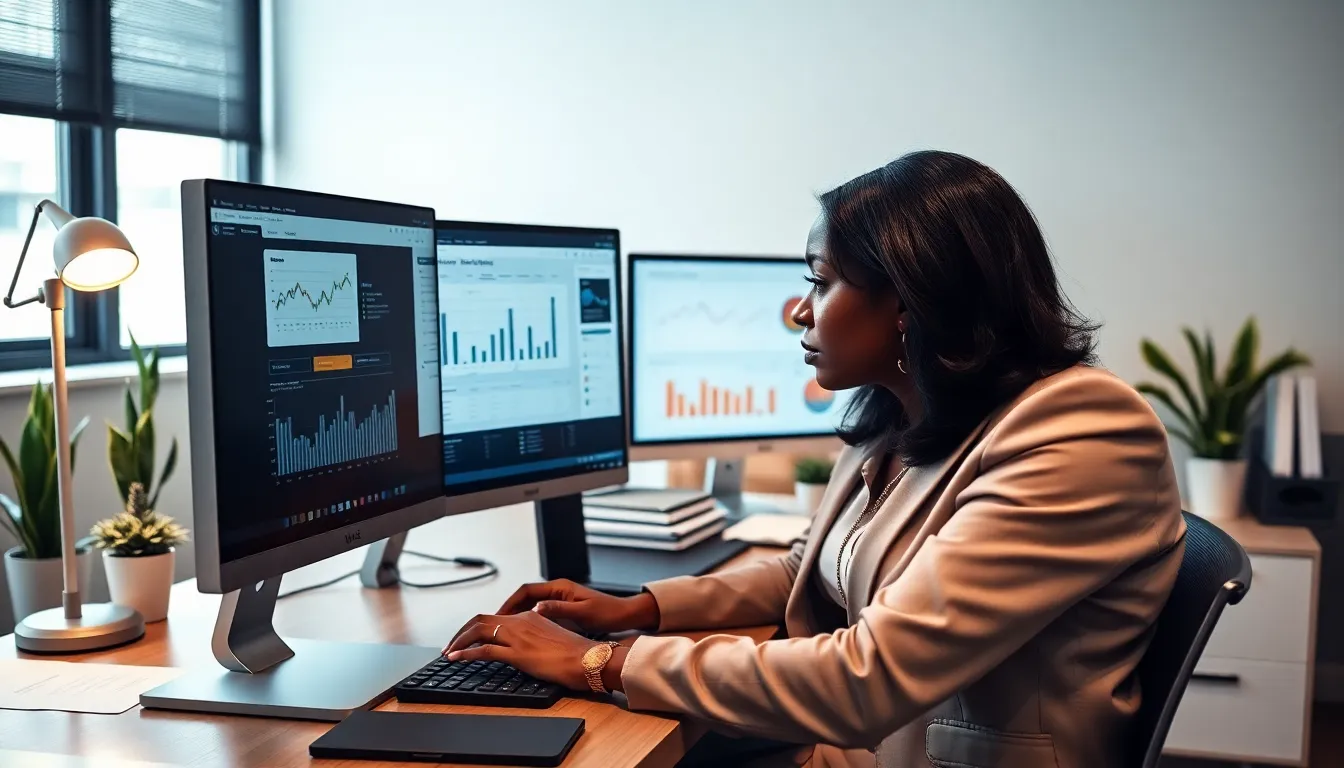Navigating the world of accounting can feel like diving into a sea of numbers without a life preserver. But fear not. Desktop accounting software without subscription offers a lifeboat for those wanting to keep their finances afloat without the annoyance of recurring bills. Picture this: you get to manage your accounts, generate invoices, and track expenses, all while maintaining control of your software without pesky annual fees. Sounds much better than the ‘surprise, here’s your monthly bill’ circus, doesn’t it? Let’s jump into the ins and outs of desktop accounting software that won’t leave your wallet gasping for air.
Table of Contents
ToggleUnderstanding Desktop Accounting Software

Desktop accounting software allows users to install programs directly onto their computers, putting financial management at their fingertips. Unlike cloud-based systems, which require a subscription for access, desktop solutions provide a one-time purchase option. This means once the software is bought, users can access all features without further payments. Each program might include varied functionalities, reflecting different business needs, from sole proprietors to expansive enterprises.
Another key aspect to grasp is the offline capability. Desktop applications function seamlessly without needing an internet connection. Hence, users can manage their finances anytime, anywhere, without depending on Wi-Fi.
Finally, desktop software can provide heightened security. Since the data stays stored on a local drive, there’s a degree of protection from online threats that often target cloud services.
Benefits of Using Desktop Accounting Software
Opting for desktop accounting software without a subscription can bring an array of benefits. First and foremost, savings shine as a significant advantage. With no ongoing fees, businesses save money in the long run.
Control is another draw. Users maintain autonomy over their data, no more worrying about third-party services mishandling finances or locking users out due to payment issues. This straightforwardness makes for a comforting software experience. Besides, familiarities matter as well. Many folk find the structure of desktop applications more intuitive. With a familiar interface, users can often dive right into their work without a steep learning curve.
Finally, software performance often excels compared to its online counterparts, especially with heavy data loads. A well-built desktop solution enhances speed and efficiency, allowing businesses to get more done in less time.
Top Features to Look For
When evaluating desktop accounting software, several features stand out as essential.
Comparison of Popular Desktop Accounting Software
- User-friendliness: A clean, easy-to-navigate interface can make or break the software experience. Look for options that provide tutorials or guides.
- Robust reporting tools: Software that can generate comprehensive reports helps track business performance over time, making financial decision-making easier.
- Inventory management: If a business involves selling products, having a feature to manage stock levels is invaluable.
- Invoicing capabilities: Quick invoicing ensures timely payments: hence, integration with popular payment methods becomes a notable benefit.
- Tax compliance features: Keeping track of applicable tax laws and generating compliant reports simplifies tax season stress.
Considerations Before Choosing Software
Choosing the right desktop accounting software requires thoughtful consideration. Users should evaluate their specific needs first. Simple freelancers won’t require the same features as a growing small business.
Next, assessing compatibility becomes crucial. Will the software work seamlessly with existing tools, such as point-of-sale systems or payroll software? This compatibility can save valuable time and frustration.
Also, customer support levels vary significantly among software providers. Researching potential support channels, like phone, email, or live chat, can be worth its weight in gold when tricky issues arise. Finally, reading user reviews gives insights into real-life experiences, making informed decisions more accessible.
Tips for Transitioning to Desktop Accounting Software
Transitioning to desktop accounting software can feel daunting, but a few tips can make the process smoother.
First, give yourself time to learn. Familiarizing with the new program before fully committing helps ease worries about data management. Some firms offer trial periods, so users can explore before jumping in.
Next, organize existing financial data. Cleaning up records can simplify the transfer process and enhance accuracy.
Backing up data is another critical step. This precaution prevents potential mishaps during migration.
Finally, hiring a professional consultant can minimize headaches. These experts can provide valuable guidance to ensure a seamless transition, paving the way for successful financial management.


